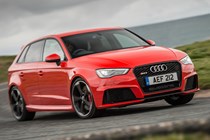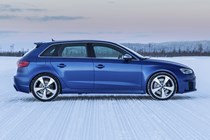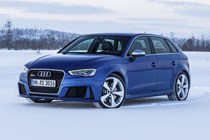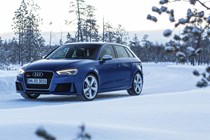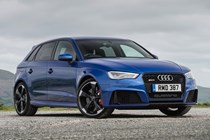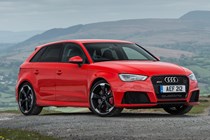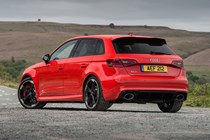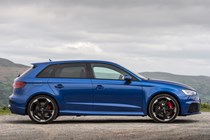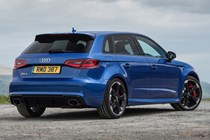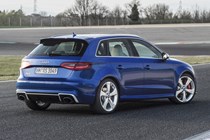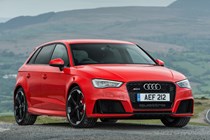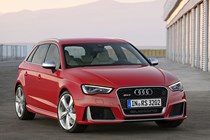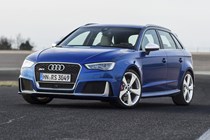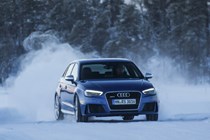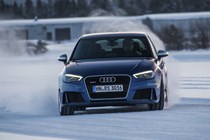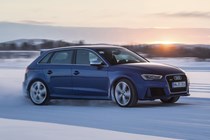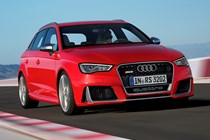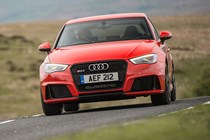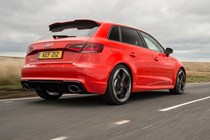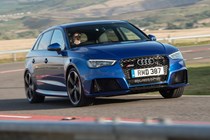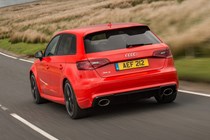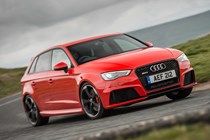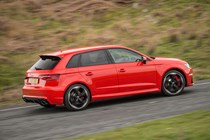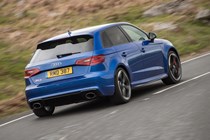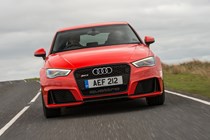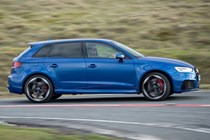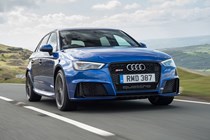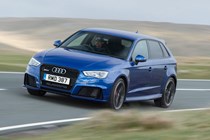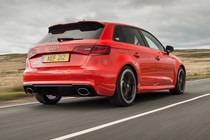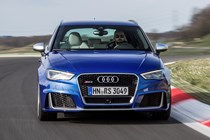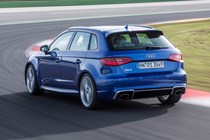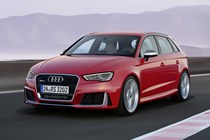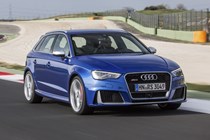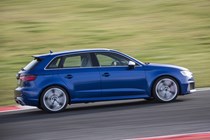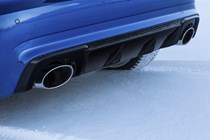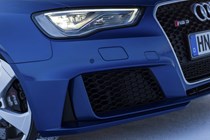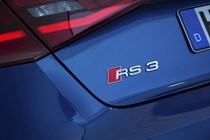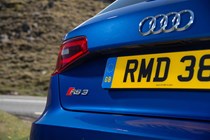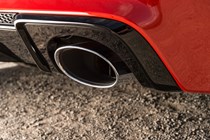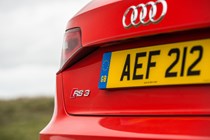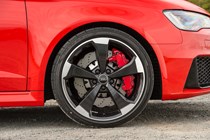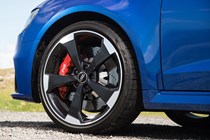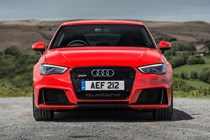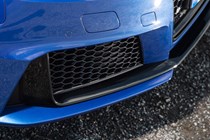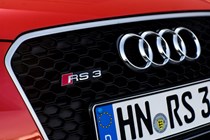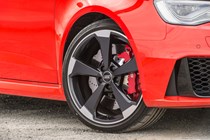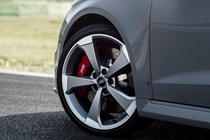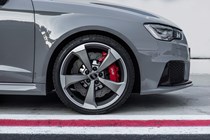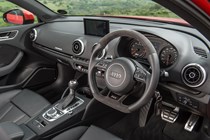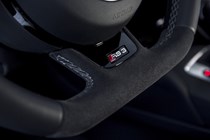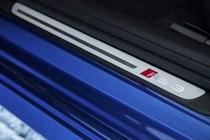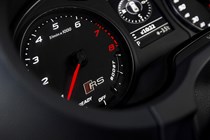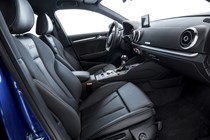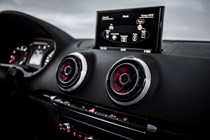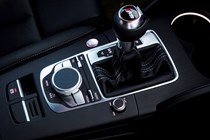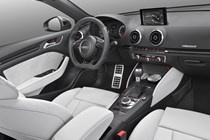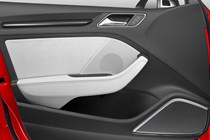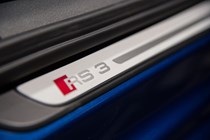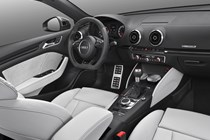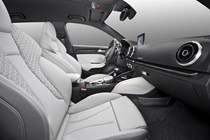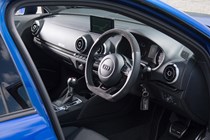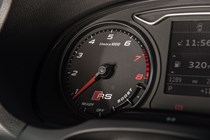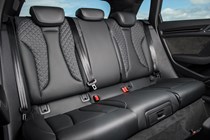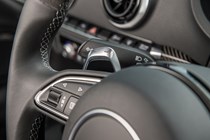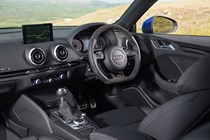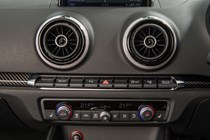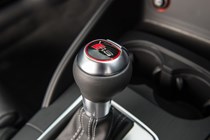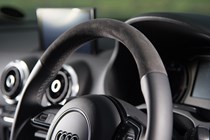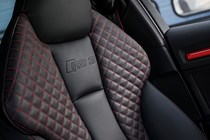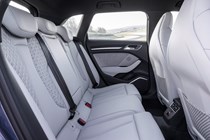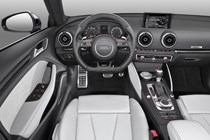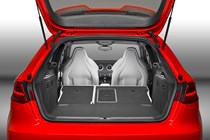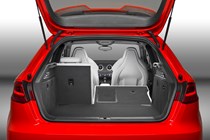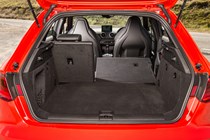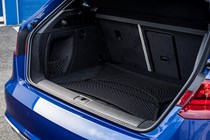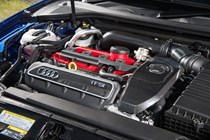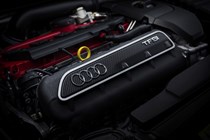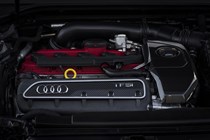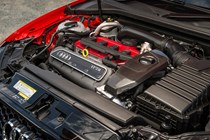Audi A3 RS3 Sportback (2015-2016) engines, drive and performance
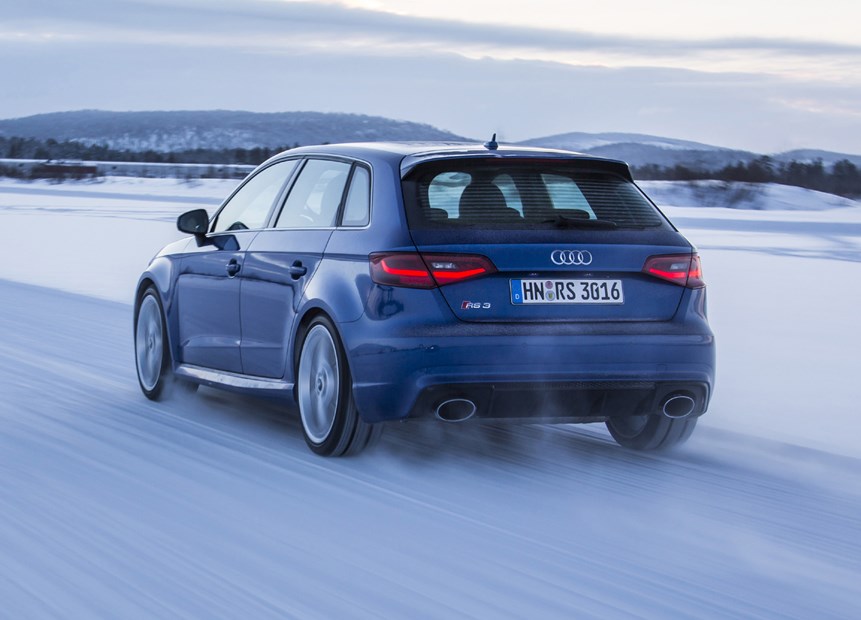
Topping the bill as the most powerful compact hatchback in series production, Audi RS3 Sportback performance is strong enough to embarrass many a purpose-designed sports car at twice the price.
Exhilarating performance
Nestled under the RS3 Sportback’s bonnet is a hat-tip to the original quattro’s powerplant. It’s a turbocharged five-cylinder engine, 2.5-litres in capacity, producing a colossal 362bhp. That power grants an electronically-governed top speed of 155mph for the RS3, which can be raised to 174mph for an additional fee.
What’s more likely to worry drivers of coupes with high-performance provenance is the sheer wealth of torque at the driver’s disposal. It Channels 465Nm of torque through the RS3’s quattro four-wheel drive system from just 1,625rpm all the way through to 5,500rpm. This guarantees enormous accelerative potential regardless of whether the Audi is at a standstill or already moving. Rocketing from 0-62mph takes just 4.3 seconds – a 0.3 second improvement over the previous RS3.
Animalistic growl
Controlling the flow from the ovular tailpipes are butterfly valves which add a deep, purposeful resonance. This complements the muscular performance, and its tone can be varied via the Drive Select system. If the standard exhaust note isn’t deep and throaty enough for you, a more sonorous RS Sports Exhaust upgrade can be specified.
In spite of all that grunt at your right foot’s command, Audi has had to ensure the latest RS3 Sportback is EU6 emissions regulations compliant. A claimed average fuel consumption of 34.8mpg (sub-28mpg will be more normal in the real world) and CO2 emissions of 189g/km don’t sound especially impressive for a member of the A3 family. They’re not extraordinary for a high performance hatchback, either.
Conveying the engine’s urgency to all four wheels is a seven-speed dual-clutch S-tronic transmission. This offers fully automatic driving as well as manual control via the lever and steering wheel paddles whenever you demand it.
But it’s not a straight lift of the gearbox which serves the S3 so well. For the RS3 the components have been redesigned to be lighter, delivering faster changes and providing more distinct response differences when alternative modes are chosen in the Drive Select system.
With such a glut of power on tap, the promise of four-wheel drive grip (which can direct all the torque to the rear wheels), and a lightened chassis, much is promised from the RS3’s handling. But ultimately it doesn’t deliver the satisfaction it should.
Particularly with the optional sports exhaust fitted, you’d be forgiven for imagining the RS3 was a brutal handful; a hatchback that would have you sawing at the wheel as you attempted to rein in all that horsepower. It sounds savage, yet it isn’t. You hear a part-wolf-part-Rottweiler crossbreed snarling behind the garden gate, but when it bolts out it does so with all the ferocity of a friendly Labrador.
Rapid across country
Not that the RS3 Sportback is entirely without talent – far from it in fact. Point-to-point, few cars in any price bracket will be able to keep up with it across winding B-roads.
Grip from the Haldex four-wheel drive quattro system is for the most part untroubled, but press on with too much verve and the front end will push wide into understeer. This occurs even when the 19-inch alloys are wearing wider tyres up front.
There’s too much weight up front for it not to – particularly noticeable under heavier braking – although the complex clutch mechanism has been relocated to the rear axle to give the Audi a fighting chance. Switching the Drive Select from Comfort to Dynamic mode makes it more playful, but not captivatingly so.
All’s not lost though, with additional power being diverted to the rear wheels to help steer you around the bend. This keeps you truer to your intended cornering line. Up to 100 percent can go rearwards, and while there was no sign of this degree of transfer happening on test, you could feel the RS3 wriggling controllably mid-corner. This keeps the back end in the front wheels’ path.
Inert steering
It’s more of a seat-of-your-pants feel than one that articulates the road conditions through the steering wheel, though. Audi has improved the feel felt at the helm over the years, but it can’t seem to manage the same level of feel you’d experience in a BMW M135i. Even flitting between the different driving modes doesn’t dial in additional involvement.
Ply it gently and the RS3 Sportback can be a docile beast. It’s one that you don’t need to be an expert driver to pilot smoothly, as you tease in the power and caress the brakes. The standard ventilated discs are necessarily large at 370mm across, clamped with eight-piston callipers to offer impressive stopping power. Beyond that there are optional ceramic brakes for even more prodigious decelerative action. These are an expensive option, though, so think wisely about how hard you’re likely to drive the RS3 before ticking that extra-cost box.
There’s an obligatory firmness to the ride quality of the standard – lowered by 25mm – sports suspension but in the most part it doesn’t prove troublingly uncomfortable. Only deeper, sharper ruts cause passenger consternation. Audi’s adaptive suspension, the damper firmness adjusted via the Drive Select function, will be available as a cost-option later in 2015. This should display a greater degree of compliance in most road conditions, but so far we’ve only sampled it on the smooth asphalt of the Vallelunga race track in Italy.
While it may not have the handling brio to complement the performance available, the RS3 is an impressively-engineered, adjustable and predictable hot hatch. It’s just one devoid of much character.


